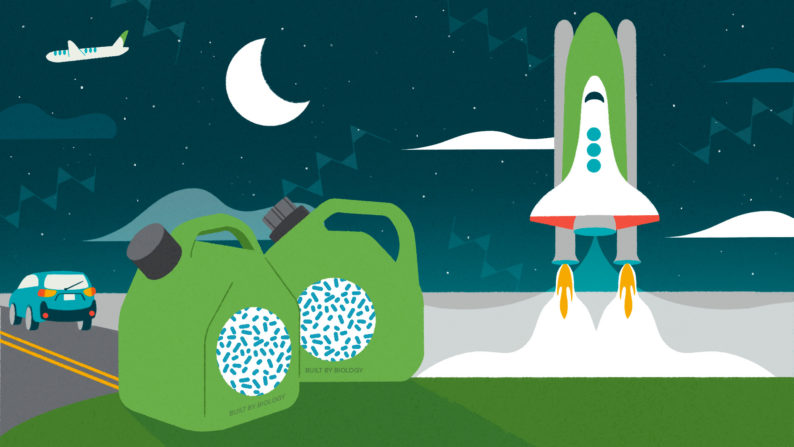Converting petroleum into fuels involves crude chemistry first invented by humans in the 1800s. Meanwhile, bacteria have been producing carbon-based energy molecules for billions of years. Which do you think is better at the job?
Well aware of the advantages biology has to offer, a group of biofuel experts led by Berkeley Lab took inspiration from an extraordinary antifungal molecule made by Streptomyces bacteria to develop a totally new type of fuel that has projected energy density greater than the most advanced heavy-duty fuels used today, including the rocket fuels used by NASA.
“This biosynthetic pathway provides a clean route to highly energy-dense fuels that, prior to this work, could only be produced from petroleum using a highly toxic synthesis process,” said project leader Jay Keasling, a synthetic biology pioneer, senior faculty scientist in Biological Systems and Engineering, and CEO of the Department of Energy’s Joint BioEnergy Institute (JBEI). “As these fuels would be produced from bacteria fed with plant matter – which is made from carbon dioxide pulled from the atmosphere – burning them in engines will significantly reduce the amount of added greenhouse gas relative to any fuel generated from petroleum.”
The incredible energy potential of these fuel candidate molecules, called POP-FAMEs (for polycylcopropanated fatty acid methyl esters), comes from the fundamental chemistry of their structures. Polycylcopropanated molecules contain multiple triangle-shaped three-carbon rings that force each carbon-carbon bond into a sharp 60-degree angle. The potential energy in this strained bond translates into more energy for combustion than can be achieved with the larger ring structures or carbon-carbon chains typically found in fuels. In addition, these structures enable fuel molecules to pack tightly together in a small volume, increasing the mass – and therefore the total energy – of fuel that fits in any given tank.
“With petrochemical fuels, you get kind of a soup of different molecules and you don’t have a lot of fine control over those chemical structures. But that’s what we used for a long time and we designed all of our engines to run on petroleum derivatives,” said Eric Sundstrom, an author on the paper describing POP fuel candidates published in the journal Joule, and a research scientist at Berkeley Lab’s Advanced Biofuels and Bioproducts Process Development Unit (ABPDU).
